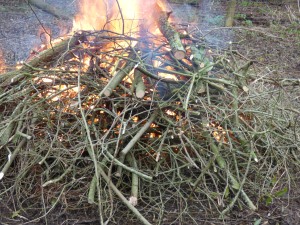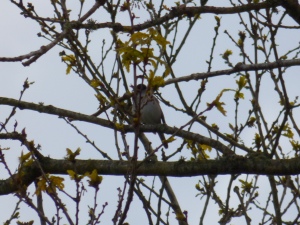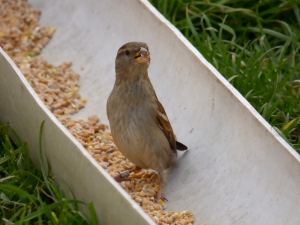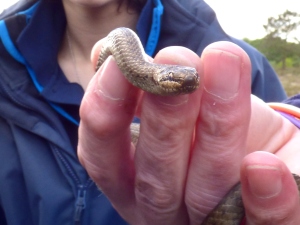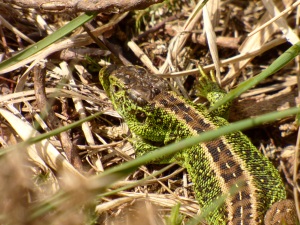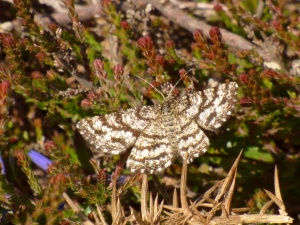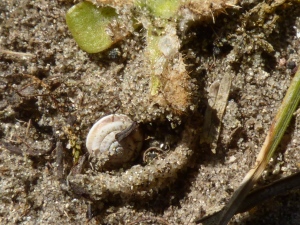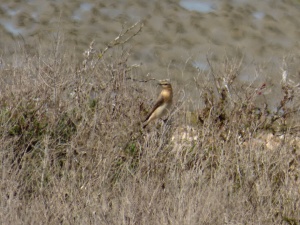Round and about the place
Winter has set into place in mid-Wales, with some heavy frosts providing some slightly scary commutes (mainly getting out of a very icy driveway!) and even the first snows being reported (and then remaining in place on the very tops of those looming hills).
On one of these oh-so-frosty-and-blimey-it’s-cold(!) days, I headed over to Pant-y-dwr for their Christmas Fayre with a stall for work. It was lovely to meet local people and chat about local wildlife and nature reserves, with a small quiz to test their ID skills. Naturally, I included some moths – two of my favourites, the Canary-shouldered Thorn (which can be seen in this blog post) and the Hummingbird Hawk-Moth (which can be seen in this blog post). A number of people were surprised that they could be moths, after all, moths are viewed as stereotypically being brown, dull and boring! So I have converted a few more people to my Moth Appreciation cause!
To drive there, I went through Gilfach Reserve (what a fab commute hey!). As previously mentioned, it was very frosty! I absolutely had to stop the car and take a few photos because it was just stunning! There is something about frost and nature that is just fantastic. Wait, erase that … nature is always fantastic, no matter the weather!
Later on, I joined the volunteer work party at one of the reserves – Llanbwychllan Lake (which I have previously visited, you can read about my visit here). They were cutting down trees in order to help the wetland grass area – it was very boggy (since I’ve just said wetland, that’s kind of obvious) so I got to wear my fantastic wellies that I got when I was with Dorset Wildlife Trust, they’re so comfy and warm! Due to so much being cut down, a lot of the wood was being burnt in bonfires, which my inner pyromaniac was loving! Fire is just so entrancing, and there is something magical about the wood being burnt.
As I write, I’m back in London, and have visited my local park. I’m not going to lie, it’s nothing special (as far as I’ve found out anyway) but it is lovely there, and I’ll pretty much always approve of big green spaces that are used by local people. There are a group of ring-necked parakeets living there, and boy do they make a racket sometimes! I didn’t manage to get a decent photo, but the photo below gives you the gist of what one looks like. I also saw a decent sized flock of goldfinches, plenty of starlings, magpies and crows, and very excitingly – a great spotted woodpecker! Although I didn’t get a photo of it (grr!). My dog helped me out with finding wildlife, obligingly picking up a stick that had some interesting slimy stuff on it. Naturally, I photographed it and tweeted it – current suggestion is a Crystal Brain Fungus (thanks Sean Foote and Ryan Clark!).
On a slightly related note, my Caymanian relatives have also found some interesting wildlife recently – one photo of which was put on Facebook and I was tagged because it was of two moths, and everyone knows how much I love moths! Their photos reminded me of some of the wildlife I had seen when visiting them, and I thought I would add in a butterfly photo of mine from Grand Cayman.
And to end, an urban sunset photo.
PS – My writing is been spreading out from this blog, including this recent post on the A Focus On Nature blog, where I wrote about Chesil Beach and Gilfach. There is a post every day during the Advent period by members of AFON, on the theme of their favourite reserve / patch. I couldn’t decide, so went for both places!
PS #2 – I’m thinking of doing another species / taxon group profile blog post soon, do let me know what you would like me to write about! Perhaps a certain moth? Or maybe a group such as newts or dragonflies?





